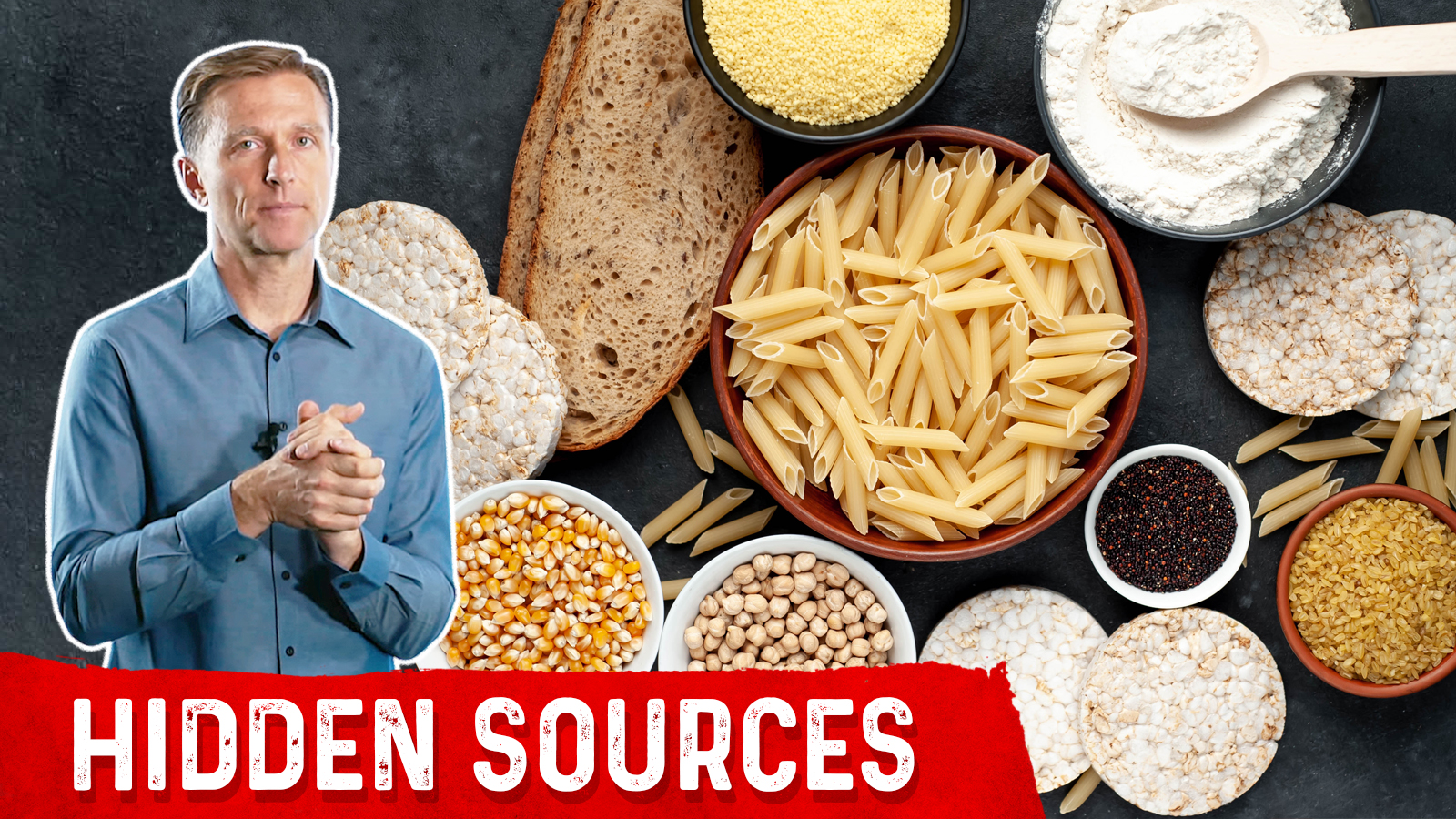10 Unexpected Gluten Sources Sabotaging Your Gluten Free Diet
Uncover the hidden gluten lurking in your everyday items and reclaim your health.

Embarking on a gluten free diet can feel like navigating a minefield. While obvious sources like bread and pasta are easily avoided, gluten often hides in plain sight, lurking in unexpected places. This guide will expose 10 surprising sources of gluten that could be sabotaging your efforts, helping you to maintain a truly gluten free lifestyle and alleviate gluten allergy symptoms or manage celiac disease effectively.
- 1. Soy Sauce and Tamari (Sometimes!)
- 2. Processed Meats: Sausages and Deli Slices
- 3. Black Licorice and Some Candies
- 4. Soup Bases and Bouillon Cubes
- 5. Medications and Supplements
- 6. Salad Dressings and Sauces
- 7. French Fries (Cross-Contamination)
- 8. Cosmetics and Personal Care Products
- 9. Communion Wafers
- 10. Flavored Coffee and Tea
- Finding Gluten Free Food Near Me
1. Soy Sauce and Tamari (Sometimes!)

Traditional soy sauce is a major culprit, as it commonly contains wheat. The fermentation process often involves wheat as a key ingredient. Thankfully, gluten free tamari exists. Look for labels specifically stating 'gluten free tamari' to ensure you're making a safe choice. Always double-check ingredients lists, even for brands you've used before, as formulations can change. A gluten free diet requires diligence.
2. Processed Meats: Sausages and Deli Slices

Processed meats like sausages, hot dogs, and deli slices often contain gluten as a binder or filler. Gluten helps improve texture and moisture retention, but it's a problem for those on a gluten free diet. Scrutinize ingredient labels for wheat, modified food starch (which can sometimes be derived from wheat), and hydrolyzed vegetable protein. Opt for brands that explicitly state 'gluten free' and are made in dedicated gluten free facilities. Some 'gluten free food near me' apps can help filter results for specific dietary needs.
3. Black Licorice and Some Candies

Black licorice is a notorious source of gluten. Wheat flour is often used as a thickening agent and provides the chewy texture. Many other candies can also contain hidden gluten, either directly in the ingredients or through cross-contamination during manufacturing. Always check the ingredient list of any candy before consuming it. Look for certified gluten free candies to avoid any potential issues.
4. Soup Bases and Bouillon Cubes
:max_bytes(150000):strip_icc()/231291-hearty-chicken-and-rice-soup-DDMFS-122-4x3-step-01-63bb38f5b8da4dbc8194ab61d0b5dc5d.jpg)
Soup bases and bouillon cubes are frequently used to add flavor to dishes, but they can also be sneaky sources of gluten. Many contain wheat flour or modified food starch as a thickening agent. Opt for gluten free certified soup bases or make your own from scratch using gluten free ingredients. Reading labels is crucial to ensure your gluten free diet remains on track.
5. Medications and Supplements

Prescription and over-the-counter medications, as well as dietary supplements, can sometimes contain gluten as a binder or filler. This is a less obvious but potentially significant source of gluten exposure. Consult with your doctor or pharmacist to determine if your medications and supplements are gluten free. They may be able to recommend alternative gluten free formulations. For those with celiac, even small amounts of gluten can trigger gluten allergy symptoms.
6. Salad Dressings and Sauces

Many commercially prepared salad dressings and sauces contain gluten as a thickening agent or stabilizer. Ingredients like modified food starch, soy sauce (without the 'gluten free' label), and wheat flour are common culprits. Carefully read ingredient labels and choose gluten free certified options. Alternatively, make your own salad dressings and sauces at home using gluten free ingredients. This allows you to control exactly what goes into your food and stay true to your gluten free diet.
7. French Fries (Cross-Contamination)

While potatoes are naturally gluten free, french fries can become contaminated with gluten if they are fried in the same oil as breaded items. This is a common issue in restaurants. Ask the restaurant staff about their frying practices to avoid cross-contamination. If uncertain, it's best to avoid french fries altogether. Seek out dedicated gluten free restaurants or establishments that take precautions to prevent cross-contamination.
8. Cosmetics and Personal Care Products
:max_bytes(150000):strip_icc()/skincare-ingredients-to-avoid-2000-78a2d09bee3548e0a765a89c5eae4e33.jpg)
While less common, some cosmetics and personal care products, such as lipsticks, lip balms, and lotions, can contain gluten. This is especially important for those with severe gluten sensitivities or celiac disease, as accidental ingestion is possible. Check ingredient lists for wheat, barley, rye, or oat-derived ingredients. Look for products labeled 'gluten free' to minimize the risk of exposure. While a gluten free diet focuses on ingested food, topical gluten can still cause reactions in sensitive individuals.
9. Communion Wafers

Traditional communion wafers are made from wheat flour and are not gluten free. Individuals with celiac disease or gluten sensitivities should request a gluten free alternative, which is often made from rice flour. Many churches now offer gluten free communion wafers, but it's essential to inquire beforehand to ensure a safe and inclusive experience.
10. Flavored Coffee and Tea

While coffee and tea themselves are naturally gluten free, flavored versions can sometimes contain gluten-based additives or flavorings. Some instant coffee mixes and flavored teas use barley malt extract or other gluten-containing ingredients. Check the ingredient labels carefully, especially for instant varieties and those with added sweeteners or creamers. Opt for plain, unflavored coffee and tea and add your own gluten free sweeteners and creamers to maintain your gluten free diet.
Finding Gluten Free Food Near Me
Living a gluten free lifestyle is easier than ever thanks to the growing availability of gluten free products and restaurants. Utilize online resources and apps to locate 'gluten free food near me.' These tools can help you discover restaurants with gluten free menus, grocery stores carrying specialized products, and bakeries offering gluten free treats. Don't hesitate to ask questions and confirm preparation methods to ensure your meal is truly gluten free and supports your health and well-being, especially if you have celiac or a gluten allergy symptoms. Remember that careful planning and label reading are your best defense against hidden gluten sources.
Taking Control of Your Gluten Free Diet
Navigating the world of hidden gluten requires vigilance and awareness. By understanding these 10 unexpected sources and taking proactive steps to avoid them, you can effectively manage your gluten free diet and alleviate gluten intolerance symptoms. Remember to always read labels carefully, ask questions when dining out, and prioritize gluten free certified products whenever possible. Your commitment to a gluten free lifestyle will contribute significantly to your overall health and well-being.